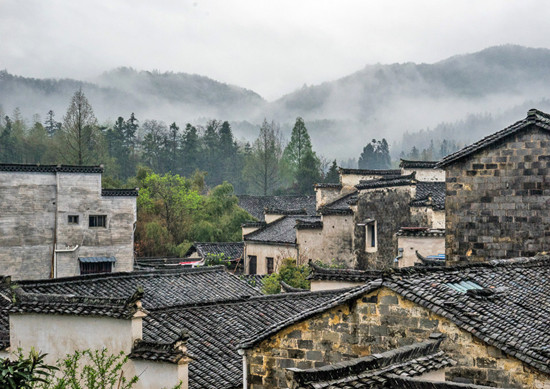
. > FOCUS > URBANIZATION
Cultural, ecological resources form basis of China’s urbanization
Author : Huo Wenqi Source : Chinese Social Sciences Today 2016-10-31

Hongcun Town in Huangshan, Central China’s Anhui Province, is famous for its clusters of architecture in the Huizhou style. Scholars are exploring ways for China to promote its urbanization without destroying its cultural and ecological heritage.
Traditional culture and ecological environment need to be protected as China undergoes a new type of urbanization, said Wang Weiguang, president of the Chinese Academy of Social Sciences (CASS), at the opening ceremony of China Urban Forum 100 co-organized by three national think tanks in Beijing on Oct. 15.
Wang said the traditional model of urbanization needs to be adjusted because it is not possible to completely retain all the cultural elements and ecological scenery of agricultural society. He said it is necessary to formulate an ideal cultural and ecological system in accordance with the future development trends to establish a new model of urbanization.
Bai Chunli, president of the Chinese Academy of Sciences (CAS), said ecological protection and cultural inheritance are essential to the healthy development of the new model of urbanization. Bai said it is vital to prioritize technological innovation to explore a new development path of urbanization with Chinese characteristics.
Zhou Ji, president of the Chinese Academy of Engineering (CAE), pointed out that the city is a giant, complicated system, so urban research requires a mixture of the fields of social sciences, natural sciences, engineering and technology.
To cope with complex problems in the system, it is crucial to have multidisciplinary experts working together, Zhou said. He said this is a way to transform China from an ancient civilization with a glorious culture and beautiful environment into a prosperous and civilized modern country.
Wu Liangyong, director of the Institute of Architectural and Urban Studies at Tsinghua University, cited Yongzhou, Hunan Province, and Dujiangyan, Sichuan Province, as typical examples of urban and rural human settlement. He said that the combination of agricultural life and the local natural landscapes has formed villages and folk houses with simple ecological wisdom and unique regional traits, and their historical experience is worthy of exploration.
Wu’s views were echoed by Li Song, director of the Center for Ethnic and Folk Literature and Art Development under the Ministry of Culture. Li said Chinese civilization has cultivated diverse survival systems and established a variety of cultural landscapes based on the concept of harmonious coexistence between man and nature.
When it comes to concrete practices of cultural inheritance, Zhang Xiaoming, a research fellow from Institute of Philosophy at CASS, suggested that technical barriers should be addressed when evaluating urban cultural resources. In addition, rational construction and city planning need to be strengthened to avoid unplanned cultural development and tourism investment projects.
Ouyang Zhiyun, deputy director of the Research Center for Eco-Environmental Sciences at CAS, said scholars should conduct further research on the green development of cities, the interaction and coupling mechanism between city and nature, urban metabolism, the mechanism of urban interaction with regional ecological environment, and the improvement of urban human settlements.
Green development is more than just a development path, said Li Xun, vice-president of China Academy of Urban Planning and Design, adding that it is also a set of values and behaviors. Li suggested that the theory of a green city could be constructed from five aspects: concept system, target system, technological system, standard system and example-based system.
Ye Shengtao made Chinese fairy tales from a wilderness
Ye Shengtao (1894–1988) created the first collection of fairy tales in the history of Chinese children’s literature...
-
How northern ethnicities integrated into Chinese nation
2023-09-18
-
Mogao caves
2023-09-12
-
Mogao Grottoes as ‘a place of pilgrimage’
2023-09-12
-
Time-honored architectural traditions in China
2023-08-29
-
Disentangling the civilizational evolution of China
2023-08-28
-
AI ethics in science fiction
2023-08-23













 2011-2013 by www.cssn.cn. All Rights Reserved
2011-2013 by www.cssn.cn. All Rights Reserved